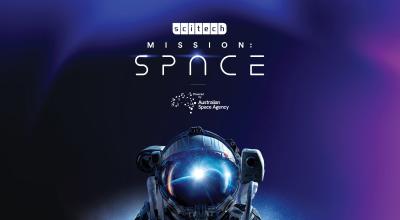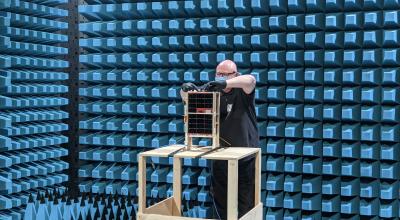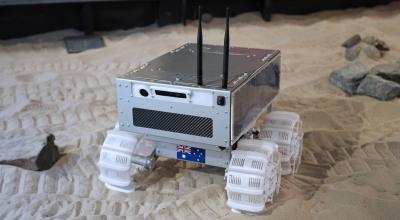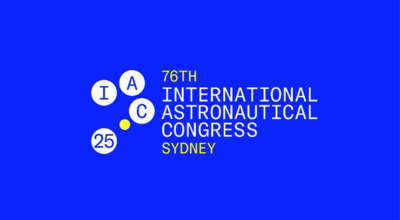The Australian Government conducted a review of Australia’s space industry capability. The review led to a report to the government on how to grow our space industry.
Overview
The Australian Government announced a review of Australia’s space industry capability on 13 July 2017. An Expert Reference Group (ERG), chaired by Dr. Megan Clark AC, conducted the review.
The Terms of Reference for the review can be found here (PDF)(DOCX)
The ERG engaged intensively with the space community in every State and Territory of Australia, and around the globe. They met with industry leaders of the space community, as well as Ministers and senior officers of relevant Government agencies, and reviewed the activities of more than 170 companies and 34 research groups within the Australian space sector. The ERG drew heavily on the insights and contributions derived from these meetings and an analysis of more than 200 submissions. The department also commissioned 3 reports to support the review and the work of the ERG:
- Australian Space Industry Capability: A Review (PDF)
- Australian Space Industry Capability: A Review (DOCX)
- Global Space Industry Dynamics: Research Paper (PDF)
- Global Space Industry Dynamics: Research Paper (DOCX)
- Global Space Strategies and Best Practices: Research Paper (PDF)
- Global Space Strategies and Best Practices: Research Paper (DOCX)
The ERG provided their Report from the Review to Government on 29 March 2018. The report set out an ambitious strategy to triple the size of Australia’s nascent space industry to AU$10-$12 billion dollars per year by 2030, making it a key contributor to the growth and diversification of the Australian economy.
The Minister for Jobs and Innovation announced the Australian Government response to the Review on of Australia’s Space Industry Capability on 14 May 2018.
Key outcomes
The report from the ERG review of Australia’s space industry capability made 9 recommendations to Government:
Recommendation 1: The Agency is responsible for the development of a national space industry strategy, and that strategy gives priority to areas that build on Australia’s strengths and utilise national competitive advantage and capabilities, in particular:
- communication technologies and services, satellite ground stations, and deep space communications network ground stations;
- Space Situational Awareness (SSA) and debris monitoring as part of global networks;
- Positioning, Navigation, and Timing (PNT) infrastructure to enhance the competitiveness of the broader economy including agriculture, transport, fisheries, emergency services, mining and oil and gas, and national security;
- the application of advanced integrated Earth observation satellite data for the benefit of all Australians and the broader economy, and to increase Australian exports of these services;
- research and development in areas of national strength to support Australian participation in joint space missions, space tourism, and industry applications, for example, space and remote medicine, space physics, planetary science, astronomy, quantum communications and technologies, artificial intelligence, advanced antenna and sensor technology; and
- robotics and autonomous systems for remote asset management on Earth and in space across the broader economy.
Recommendation 2: The national space industry strategy gives importance to emerging frontiers where Australia can leapfrog into areas of future competitive advantage, including the application of artificial intelligence, robotics, and big data analytics to space systems and space-derived information; next-generation communication technologies, including optical, hybrid optical radio, and quantum communications, to enable secure, broadband space-based communications; innovative sensors, antennae, and instrumentation. Australia should also take advantage of the global space technology paradigm shift towards constellations of miniaturised spacecraft for communications and Earth observations, and next-generation rocket and spacecraft propulsion systems.
Recommendation 3: The Government establish a dedicated, ongoing, and whole-of-government statutory agency (the Agency) to realise Australia’s civil ambitions in space, and that interim arrangements are made to establish the Agency immediately. The Agency will be responsible for civil strategic policy direction setting, international representation, coordination of national civilian activities, and strategies to facilitate the growth of the Australian space industry sector as set out under the Agency Charter.
Recommendation 4: The Government provides ongoing, core operational funding to the Agency to enable its establishment and effective operation with additional funding for an ongoing Space Industry Development Fund once the Agency is fully operational. This Fund will invest in: international partnerships to enable increased industry participation; industry-led collaborative research and development in the areas of strategic priority and leapfrog technologies; and support for national nodes in partnership with State and Territory governments and their industries. It will also provide early stimulus to national infrastructure such as enabling commercial ground stations and shared test facilities for satellite manufacture and equipment verification. The Government provides scope for the Agency to bring forward for dedicated funding every three to four years, major national space projects such as satellite projects, to meet national and international terrestrial and marine needs, and to participate in discovery science missions as part of international consortia and national space competition missions.
Recommendation 5: The Government extends existing partnership and treaty-level agreements, and establishes new partnerships to increase the participation of Australian industry and research, particularly by:
- strengthening partnerships in space to allow greater technology transfer and technology development in Australia;
- extending existing partnerships and treaty-level agreements, as well as promoting commercial arrangements to allow increased participation of Australian industry on missions;
- securing existing and establishing new ground stations and deep space communications centres in Australia;
- securing new partnership agreements with key space agencies and commercial partners in the global space sector, including in Asia and Oceania; and
- securing cooperation agreements for access to critical national Earth observation (EO) data, including for weather, land and oceans, and emergency and disaster management.
Recommendation 6: The Agency works with other Government departments across a range of portfolio areas, such as agriculture, environment, and communications, to emulate the Australian Defence Innovation Hub Investment program and the US’ Small Business Innovation Research (SBIR) and Small Business Technology Transfer (STTR) programs to link both large and small business to the purchasing needs for civil Government projects and investments, including the space-related investments.
Recommendation 7: In order for commercial entities and other participants to move quickly, that the Agency facilitates regulatory approval processes for small satellite launch facilities in Australia and the launch of Australian satellites overseas, and investigates opportunities to partner with appropriate international launch providers.
Recommendation 8: The Government gives priority to strategies that enable: active engagement with Australian schools and the broader community on global space activities; space-related training and education to improve capability; space-inspired STEM outreach; and industry-led research collaboration to underpin the space industry.
Recommendation 9: In conjunction with the Government acting on these recommendations, we call on industry to play an important role in achieving the national goals and strategies for the Australian space industry by: investing in innovation to remain globally competitive; engaging with the Agency in setting strategic priorities; exploring partnerships with small- and medium-sized companies to participate in global supply chains; collaborating with research institutions; and supporting competitions for development of innovative technology, applications, and skills.
Publication contents
|
List of Figures |
Page 3 |
|
List of Tables |
Page 4 |
|
Executive Summary |
Page 5 |
|
Context |
Page 9 |
|
Recommendations |
Page 12 |
|
Background |
Page 15 |
|
Chapter 1 – Opportunities for Australia in Space |
Page 22 |
|
Chapter 2 – Strategy and Roadmap |
Page 27 |
|
Chapter 3 – The Australian Space Agency |
Page 37 |
|
Chapter 4 – International Engagement |
Page 44 |
|
Chapter 5 – Industry Enablers |
Page 48 |
|
Acknowledgements |
Page 55 |
|
List of Appendices |
Page 56 |
The review found that:
- Australia’s space industry already employs about 10,000 people and was worth AU$3.9 billion in the 2015–16 financial year
- Australia has a vibrant community of active small and medium-sized enterprises and world-leading capability in research
- stakeholders expressed a strong need for an Australian space agency.










